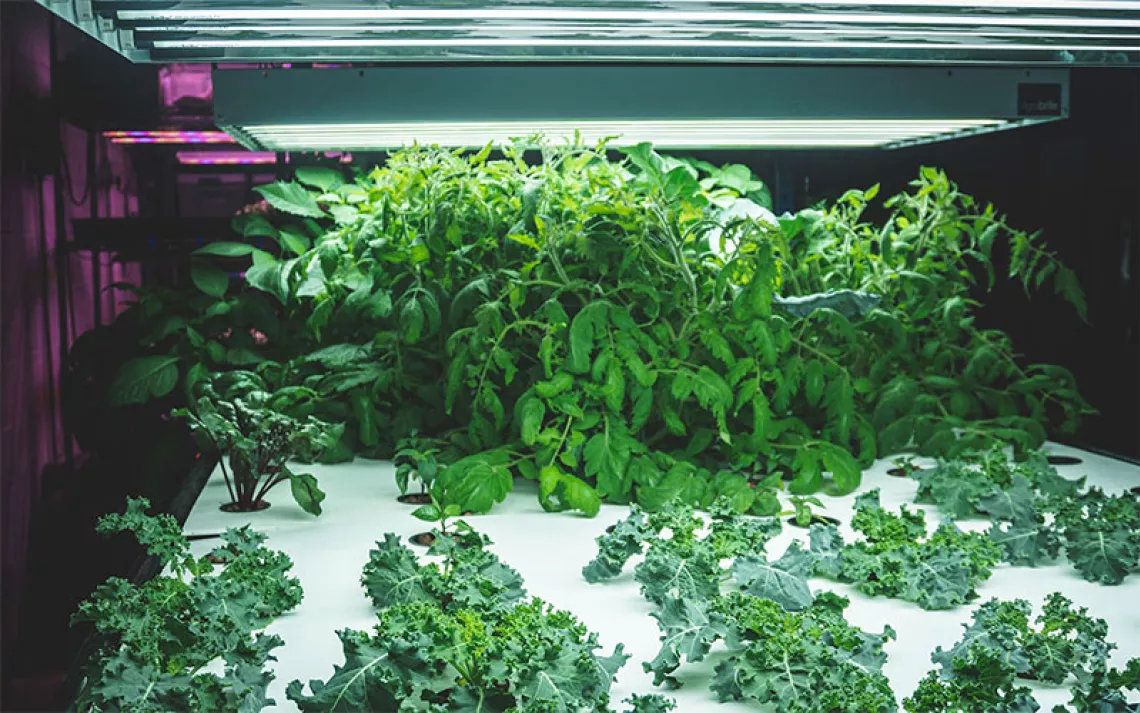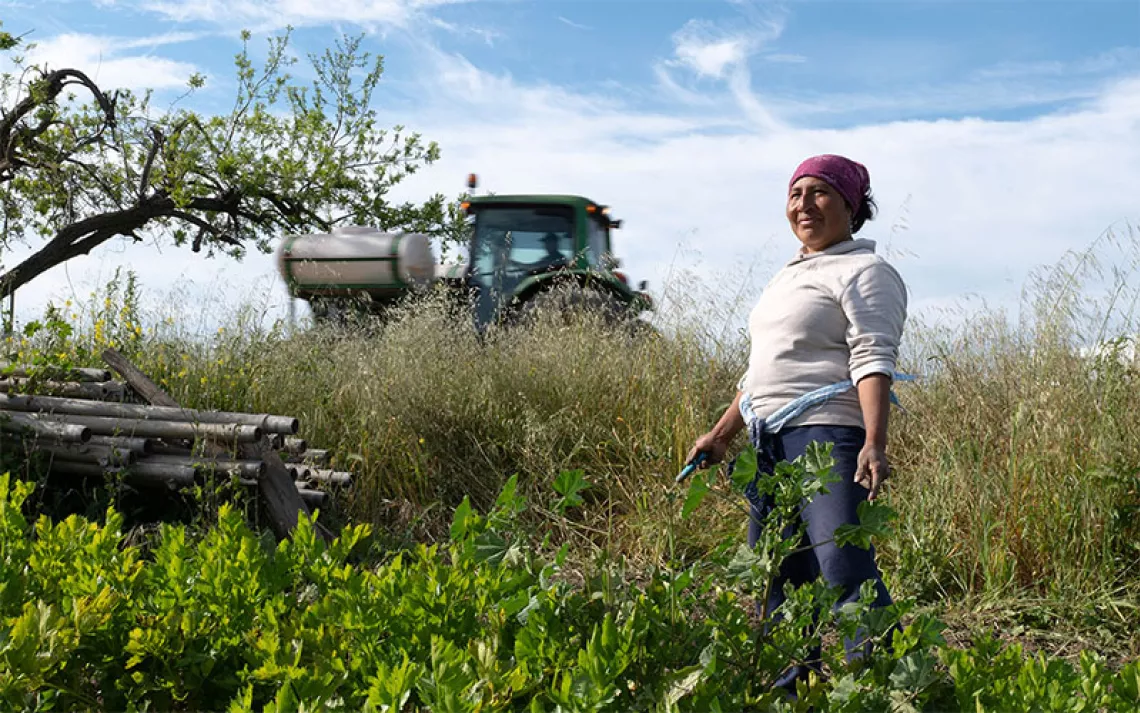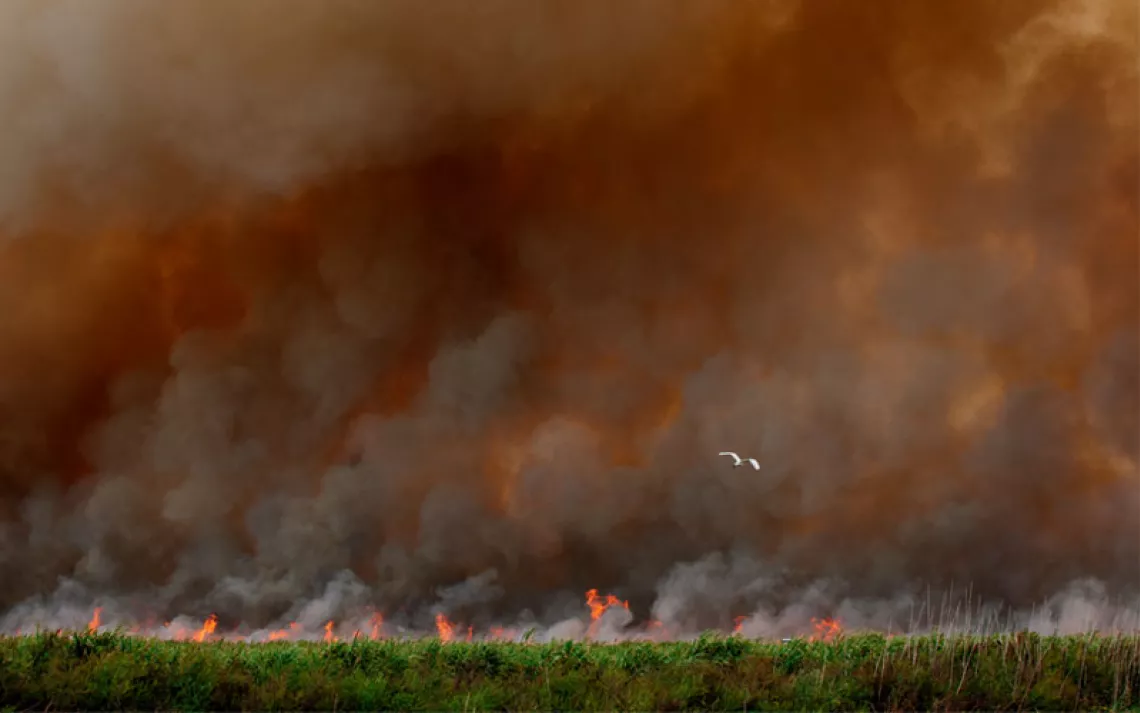Allan Savory's Holistic Management Theory Falls Short on Science
A critical look at the holistic managment and planned grazing theories of Allan Savory
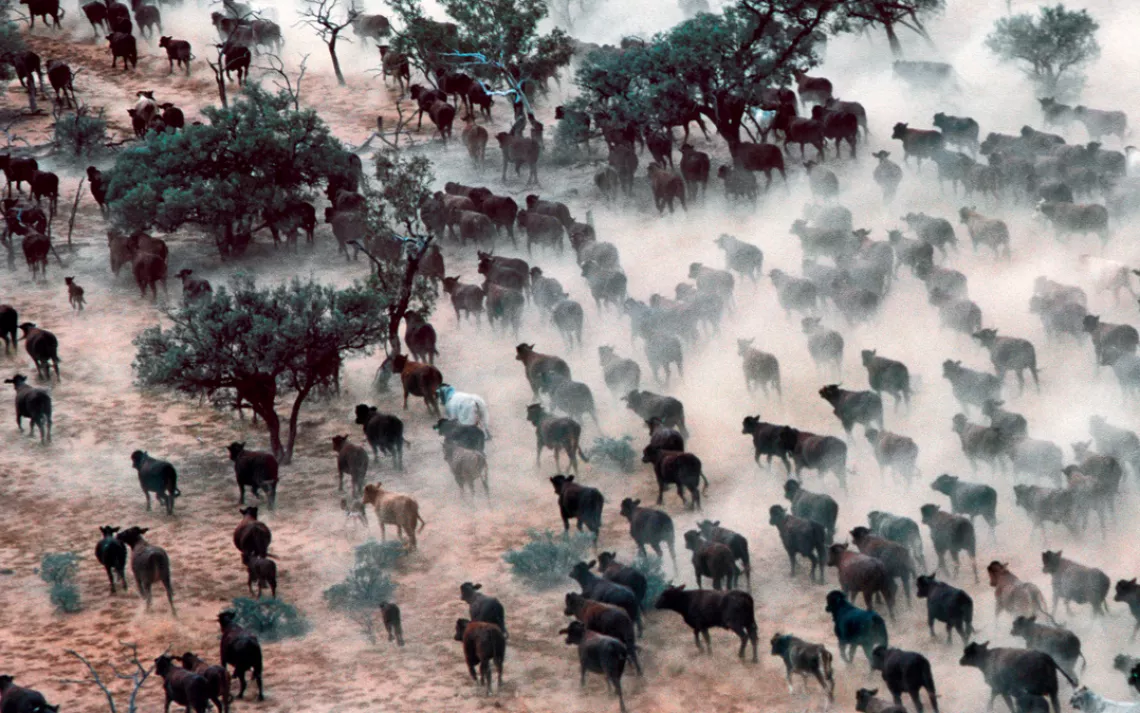
Photo by Peter Charlesworth/Getty Images
Before he became known as an apostate ecologist, Allan Savory was a soldier. Born in Zimbabwe to a family of British colonials, he commanded an elite government unit during the country's long, brutal civil war. He and his squad—men handpicked and trained by him—spent much of the 1960s fighting communist guerrillas in the veld, the savannas and grasslands where antelopes, elephants, and lions roam. It was hard, isolating, dangerous work. And it prepared him for the decades he has spent battling environmental orthodoxy, first as a farmer and rancher in Africa and then as an agricultural consultant in the United States.
Savory's apostasy is based on a controversial idea: that we need more cows—not fewer—grazing on the world's grasslands, prairies, and deserts, the arid and semiarid two-thirds of Earth's land surface where soil is especially susceptible to drying out and eroding as the climate warms and droughts worsen. This ruinous process is known as desertification, and it is estimated to be degrading an area the size of Pennsylvania worldwide each year. It ends with soil that has turned to dust.
Stopping desertification is Savory's obsession. He watched it spread across southern Africa over the course of decades, spawning poverty and migration, which contributed to war. Savory's big claim is that the science about desertification is wrong, notably the idea that cattle grazing always contributes to degradation in what he calls "brittle" landscapes. After laboring for years in relative obscurity, Savory eventually built up a significant international following. Today, according to Savory, tens of thousands of farmers and ranchers across the globe, managing some 40 million acres of land, adhere to his philosophy.
Savory's ideas catapulted into the mainstream in 2013, after he stood on a stage at the TED conference in Long Beach, California, and offered his grand theory about livestock. Savory told the audience that cows offered "more hope than you can imagine." The 22-minute talk was titled, ambitiously, "How to Fight Desertification and Reverse Climate Change." The presentation garnered millions of views—3,746,905 as of this writing—and quickly became notorious among scientists who study the ecology of grazing.
Savory's theory goes like this: Cows that are managed in the right way can replicate the beneficial effect on soil of the native herds that once covered the planet's grasslands. Wild herds lived in fear of predators, and for protection they traveled in tight bunches, moving quickly. If we keep cattle moving across the landscape to mimic this behavior, and if we preserve the ancestral grazer-soil relationship—the animals churning the soil with their hooves, fertilizing it with dung and urine, stomping grass, creating mulch, stimulating plant growth—we can re-green the arid lands and, at the same time, encourage soil microbes that eat carbon dioxide.
Savory's vision, in part, follows some of the emerging science of what's called soil carbon sequestration. With more grass and better topsoils, we can use biological processes to capture and store the carbon that drives global climate change. The most commonly recommended strategies for what's called "carbon farming" are adopting no-till or low-till methods; boosting soil organic matter with additions of compost; and better managing crop rotation, especially through the use of cover crops. Savory puts a twist on the idea by adding livestock to the mix and recommending that ranchers increase the number of cattle per acre.
In his TED Talk, Savory claimed that by deploying his method of "holistic management and planned grazing" to "take back" just half of the planet's arid grasslands, humanity could accomplish a stunning feat: the reduction of atmospheric carbon to preindustrial levels. "There is only one option—I'll repeat to you, only one option—left to climatologists and scientists," he told the audience, "and that is to do the unthinkable, and to use livestock, bunched and moving, as a proxy for former herds and predators, and mimic nature. There is no other alternative left to mankind."
The presentation offered a remarkable win-win vision: more cattle, more hamburgers to feed a growing population, more profit for stock growers. In the process, the planet gets healthier land that acts as a sink to absorb carbon, and climate change comes to a halt.
The audience erupted with cheering and whistling, and when the noise subsided, TED host Chris Anderson took the stage and told Savory that it was "an astonishing talk." Twitter echoed with the good news. Michael Pollan tweeted, "Eat MORE meat?" Discover magazine said it was "one of the most thought-provoking" TED presentations of the year. Michael Shermer, the founding publisher of Skeptic magazine, pronounced it "moral progress in climate change."
After Savory's breakout performance, the attention and the accolades kept coming. In 2015, Savory was the central subject in an episode of the PBS documentary series A New Wild. The series' host—M. Sanjayan, a well-respected researcher who is a senior scientist at Conservation International—visited Savory's Zimbabwe ranch and came away impressed. "Allan's results are spectacular," Sanjayan told PBS viewers, and "could revolutionize the way in which we live on the plains." Sanjayan continued: "Cows or wildlife, it actually may not matter that much. The message is an extraordinarily powerful one, and it could be the best thing—the absolute best thing—that conservation has ever discovered."
♦
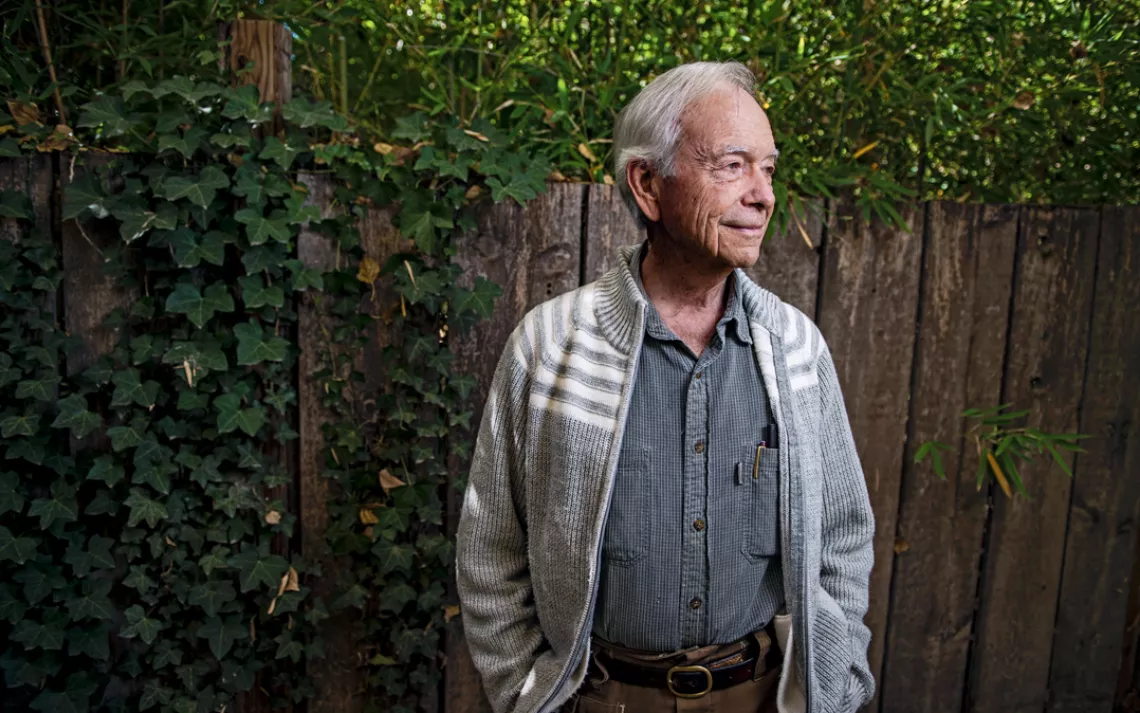
Allan Savory at his home in Albuquerque | Photo by Roberto E. Rosales
When I met with Savory last fall at his home in Albuquerque, New Mexico—from where he oversees the Savory Institute, a worldwide nonprofit enterprise—he had the same militarily erect posture that I'd seen in the TED video. It was the bearing of a man much younger than 81. His eyes were gleaming, lively, and critical, but his voice was soft, his manner reassuring, and his face handsomely weathered. We sat in his den next to a fireplace ornamented with the artifacts of war: a shrine of bullets and bayonets, worn rucksacks, old rifles. He compared himself, by sly inference, to Galileo. "For years we believed in a flat world, and now we know we're in a round world," he told me. "Now we're in another big paradigm shift. From reductionist management of the land to holistic management. From a mechanistic view to a holistic view."
Two hours later, things were not as pleasant. I'd come prepared with literature critical of his ideas and had been citing it. He rolled his eyes in exasperation and shook his head. He turned to his wife, Jody Butterfield, who is also his frequent coauthor and who had walked in to say hello. "Well, this is taking so very much longer than expected, because Chris"—he shot me a mischievous grin—"is just totally steeped in the conventional crap about cows, and I've had to go over and over this with him." Butterfield smiled and accepted this statement by saying nothing.
The counterevidence I had been referencing says this: When there are too many cows in places with intermittent or little rain, where the vegetation is brittle and the soil fragile, the animals spell trouble. Overgrazing denudes the soil and produces erosion, which leads to a landscape where plants can't revive and grow. At least 8.4 billion acres on the planet are grazed, and 73 percent of that land is suffering from some form of land degradation, according to the International Journal of Biodiversity. The problem is perhaps worst across arid lands where plants evolved with almost no exposure to large grazers, such as in the mountainous west of the United States—where Savory happens to live.
Cattle grazing produced such a transformation in the environment of the American West that its introduction, in the late 19th century, has been compared to a geologic event. Cattle have been implicated in the eradication of native plants, the loss of biodiversity, the pollution of springs and streams, the erosion of stream banks, the exacerbation of floods that carry away soil, the deforestation of hardwoods, and, in the worst cases, a reduction of living soil to lifeless dust. Two centuries of grazing on the Colorado Plateau catalyzed the most severe vegetation changes in 5,400 years, one study concluded. "The impact of countless hooves and mouths over the years," wrote the late environmental historian Philip Fradkin, "has done more to alter the type of vegetation and land forms of the West than all the water projects, strip mines, power plants, freeways, and subdivision developments combined."
Savory agrees that grazing as historically practiced has been disastrous. But this is only because stock growers and herdsmen have been ignorant of holistic management. "It was reductionist grazing they practiced, nothing of the holistic," he told me.
"Holistic" is an all-encompassing term for Savory, as much a worldview as an agricultural system. "This isn't just about grazing," he said. "You can practice holistic management of your household, your life. It's about looking at the whole complexity of life." I told him I wanted to hear what it means for grazing practices.
The essence of holistic planned grazing comes down to stocking rates: the number of cows on any given piece of land. It is always better, Savory argues, to have higher stocking rates. But the animals need to be herded so they don't spend too much time in one place. Grazing time, not grazing density, is the key to Savory's re-greening process. This requires that herders closely watch the effect of the animals on the land, constantly observing the soil and grass and the water cycle and adjusting the herd's behavior and movement to maximize ecosystem health. "It's about managing for habitat," Savory told me. "Not just for livestock, but for wildlife, for high biodiversity, for mineral cycles. It's managing for how we want this land to look 500 years from now for our descendants to be really enjoying it."

Fence separating over-grazed pasture from native Chihuahuan Desert grassland near Hatch, New Mexico. | Photo by Gerry Ellis/Minden Pictures/Getty Images
He opened his laptop to share a series of photographs. He said they showed land in South Africa, Botswana, Zambia, and Zimbabwe where the Savory method had been deployed to wondrous effect. The photos were contrasted with others of nearby areas suffering from "the reductionist paradigm" of land managers unacquainted with holistic grazing.
He clicked first to pictures of Zambezi National Park, in his native Zimbabwe: ruined, eroded banks along a river. "We're on a river! Look at the skeletons of the trees. Just eroding national park. National parks were formed to save biodiversity!" More sad pictures: bare ground, struggling plants, and desiccated arroyos. "Look at this. And look at this. Look. All in a national park. Look at the flood damage on a small stream. Look at the bare banks of the river."
The slideshow raced along. We were at South Africa's Kruger National Park, which according to his photos was a devastated place, and then we were in Botswana. I asked what the managers were doing in these national parks that was so destructive. "Let's just show you these, and then we'll get to it." The photos in a flash turned green and lush, tall grasses and healthy stream banks and flowing water. "Now you've jumped to our own land. These are same-day pictures. That's in the middle of these national parks. Same soil, same everything. The only difference is holistic management. Look at the grass. Look at the reeds. Look at the health. Beautiful, stable, high biodiversity."
I asked again: What accounts for the difference? "The management," Savory replied. But what specifically about that management? What does that consist of? "We can explain that in a moment, but let's not digress." He did not digress. He showed me more pictures.
I kept asking for details. I wanted to know how holistic management works on the ground. I asked for statistical measurements of recovery on land that had been treated with his method. I wanted to know the metrics of the claimed increases in biodiversity and vegetation density; the number of grazers; the duration of the grazing; the time frame of recovery. Did these explosions of vegetal growth occur overnight or over decades? I wanted specifics. He looked at me with glinting eyes. "There can be no discussion of specifics," he said. "If I gave you the specifics, it would start an argument."
The telephone rang, and Savory stood to take the call. I studied an informational sheet he had handed me when we met. It explained why he couldn't talk about the science behind his methodology. "Holistic management does not permit replication," said the document, which Savory had authored. "This point is critical to understanding the great difficulty reductionist scientists are experiencing trying to comprehend holistic planned grazing—because no two plans are ever the same even on the same property two years running." A stunning admission appeared a few lines lower: "Every study of holistic planned grazing that has been done has provided results that are rejected by range scientists because there was no replication!"
Skepticism is not a new challenge for Savory. When, in 1998, members of the Department of Range and Forage Resources at South Africa's University of Natal—Savory's alma mater—met with him to discuss the particulars of his grazing system, they came away perplexed. "As a scientific body dedicated to the research and development of the sustainable utilization and management of southern African rangelands," they reported, "the correct approach to holistic management would be to rigorously evaluate the proposals put forward by Allan Savory and others. However, this is extremely difficult." The reason was "the very inconsistency of the holistic management approach."
Experimental validation, of course, offers the best process for evaluating whether holistic management works. But Savory rejects that possibility. "You'll find the scientific method never discovers anything," he told a journalist for Range magazine, which profiled him in 1999. "Observant, creative people make discoveries. But the scientific method protects us from cranks like me."
Later, reading Savory's seminal treatise, Holistic Management, I found the same unshakable confidence. Holistic planned grazing, the book claimed, "offers the simplest way we have found for managing the complexity that exists when livestock share the land with wildlife, crops, and other uses. This procedure will lead to the best possible plan in the most difficult and seemingly hopeless situations. Even when the rains have failed to come at all, and even through times of crisis, including war, this planning procedure has never failed me. Nor do I believe it will ever fail you."
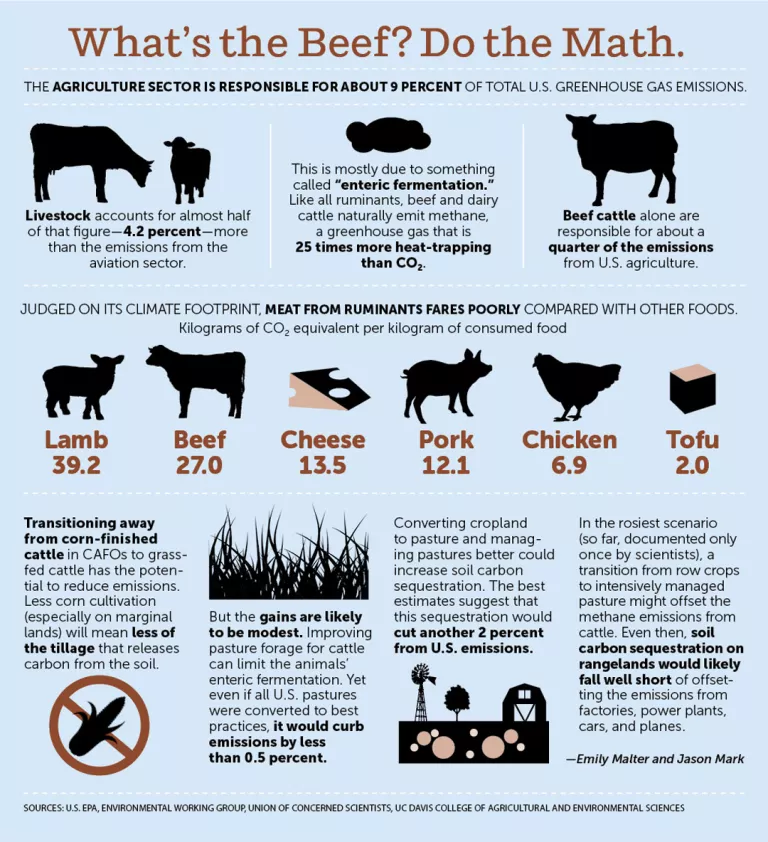
♦
On the Savory Institute's website, there are links to ample testimonials from ranchers who claim benefits from using the Savory method. "We are excited to share the simple yet effective tools of holistic management with our community," reads one typical statement, from a California rancher named Kelly McGarva. "It has made all the difference in our management practices, and the results can be seen on the land." The attraction for ranchers is Savory's promise that they can double, even triple, stocking rates while improving soil and vegetation cover. But the tales of success are self-reported and anecdotal. When scientists have conducted the rigorous evaluation suggested by the University of Natal researchers, the results have not been favorable.
In 1969, the Charter Estate, a London-based company, donated land, funding, and cattle to conduct a seven-year study of Savory's "short-duration grazing" on 6,200 acres in Zimbabwe. Savory stated in 2000 that the Charter Trials, as the experiment was called, was "the only trial ever conducted" about his work and that it "proved what I have always advocated and continue to advocate when livestock are run on any land."
But a 2002 review of the Charter Trials concluded that the Savory grazing method "failed to produce the marked improvement in grass cover claimed from its application." The study's authors found "no definite evidence in the African studies that short-duration grazing . . . will accelerate plant succession." The re-greening from cattle didn't happen. (Savory has since disavowed short-duration grazing, saying that it was flawed and that holistic management, despite its similarities to the short-duration model, now offers the best option.)
Since that initial study was conducted, Savory has faced a new wave of scrutiny. A group of United States-based rangeland scientists, led by David Briske, a professor in the Department of Ecosystem Science and Management at Texas A&M University, stated flatly that the Savory method "can not green deserts or reverse climate change." Savory's claims "are not only unsupported by scientific information, but they are often in direct conflict with it." Briske's study, published in the journal of the Society for Range Management in 2013, concluded: "We find all of Mr. Savory's major claims to be unfounded."
The Briske team found that Savory misrepresented the photos of landscapes he presents as evidence of the alleged desertifying effect of removing cattle. One of the photo series he often uses features Chaco Culture National Historical Park in New Mexico. But the land, the Briske report said, was not desertified from lack of cattle. Instead, the landscape was slowly recovering from decades of abusive overgrazing. (I emailed Briske for an interview, but he declined to talk. "Frankly, I have grown weary of the grandiose and unsubstantiated claims of Mr. Savory," Briske replied.)
Andres Cibils, a professor of range science at New Mexico State University, looked at Savory's claims of rangeland regeneration in Patagonia, among the highlights of the TED Talk. "In the case of Patagonia," Cibils told me, "there are no credible data to support Savory's success assertions."
Before coming to the United States, Cibils lived and worked in Patagonia for 13 years. Many of the region's ranchers, hard-hit by desertification that had resulted from decades of overgrazing, were worried for their future. "They were hungry for a miracle," said Cibils, who is familiar with several of the ranches where the Savory system was attempted. "They were willing to try this thing. But it's the same old story. I visited ranchers in New Mexico where Savory has consulted. These are people who tried it and who either modified or abandoned it because the results were a train wreck."
One of the tenets in Savory's argument is that soil becomes unhealthy—less carbon-rich—without the concentrated hoof action of cattle. By increasing the number of cattle on the land, ranchers can boost soil carbon sequestration. But this claim also founders under close inspection.
Briske and his colleagues looked at Savory's assertion that revitalized rangelands could help reduce atmospheric carbon to preindustrial levels. This would be a 30 percent drop, from 400 parts per million of CO2 to 280 PPM. The idea, the researchers concluded, is fantastical, amounting to "an enormous misrepresentation of the global carbon cycle and climate change science."
With global greenhouse gas emissions at roughly 50 billion metric tons a year, rangelands would have to sequester 13.6 billion tons annually, the report concluded. There are 5 billion hectares of rangelands; the most widely accepted estimate of potential soil carbon sequestration is less than 0.25 tons of carbon per hectare per year. That's eightfold less than Savory's claims would require.
Rattan Lal, a leading authority on soil carbon sequestration who teaches at Ohio State University, also expresses skepticism. "When a climate is drier and warmer, as on most rangelands, the rates of sequestration are generally lower," Lal said. "The question with Savory is the rates."
According to some researchers, Savory appears to misunderstand the intricate processes of soil carbon sequestration and nutrient cycling. I called up Kelsey Brewer, a one-time organic farmer who is now a staff researcher at the University of California, Davis, and who is studying whether livestock grazing alone can improve sequestration. "Carbon is central to his argument," Brewer said. "But he gives no specifics in his TED Talk. And no data. He makes claims, and shows pictures."
In Savory's universe, ungrazed land, known as "rested" land, will always wither away. "It's just wrong," said Brewer. A substantial number of studies on desert grassland have found that with rest, grass cover "increases dramatically," while "intensive grazing delays this recovery."
A study of grasslands in China found that 20 years of grazing exclusion increased soil carbon storage by more than 35 percent. Another study there of semiarid grasslands reported that carbon levels, variously measured in aboveground biomass, belowground biomass, and grass litter, were as much as 157 percent higher in livestock-free grasslands than in grazed grasslands. In Australia, researchers concluded that destocking shrublands for a period of 20 years resulted in net carbon sequestration.
Well-managed grazing, Brewer emphasized, can in some cases increase soil carbon content. It's based on how you do it. "His claim is that grazing density doesn't matter, and that it's only a matter of the speed with which the grazers move through the land," he said. "But grazing density totally matters." Savory says that fast-moving, densely packed livestock loosen soil. "This is the exact opposite of correct," Brewer said. High-density grazing can result in compaction. The very top layer of the soil—a fraction of the soil, the top 10 centimeters—might be loosened, but ultimately there is a net compaction. "There's just too much evidence supporting increased compaction for Savory to make this claim without more concrete proof."
An increase in carbon content is almost always associated with the beneficial things we want from soil: more porosity, more water penetration and retention, an increase in microbial biomass, and an overall increase in nutrient cycling, which means that fungi and bacteria are transforming nutrients back into plant-available forms while also gobbling up atmospheric CO2. But as a stand-alone strategy, animal grazing results in a metabolic gap in the nutrient cycle. The cycle becomes open instead of closed—especially in a market-based grazing model, which Savory advocates. The moment a rancher puts an animal onto rangeland, the animal is removing nutrients from the soil and converting them into muscle and fat. The moment the animal leaves the land to head to slaughter, those nutrients leave the system, and the net total productivity of the land decreases. A dead animal remaining in the system rots back into the soil, its carcass closing the nutrient loop. But that doesn't happen in the system advocated by Savory, whose sales pitch to ranchers includes the prospect of selling more cattle on the market.
This is exactly the complex analysis one doesn't hear from Savory. "And that's my point," Brewer said. "You can't be reductive. Savory's claims are so reductive. I study integrated crop-livestock systems, in which we have grazing coupled with co-management and the inputs of additional fertilizers, like nitrogen and phosphorus, and we do see increases in carbon. The problem is that very often animal grazing alone does not increase carbon. It's just not true what Savory says."
♦
In March 2016, while traveling in the high desert of southern Utah, I was invited to a local presentation about rotational grazing that included a screening of Savory's TED Talk. About 20 people showed up at the community center in the remote farming village of Boulder, population 226. We sat in the dark and listened to Savory's stirring words and watched his slideshow. The event, designed to inspire area ranchers, was organized by a group of self-described progressive agrarians.
Following the video, Ron Johnson, who runs an organic farm and lodge, led a discussion. Johnson is an optimistic 56-year-old who made a small fortune investing in Utah's Great Salt Lake brine shrimp industry and is now interested in getting into livestock using holistic management. There was mostly praise and admiration for Savory.
A lone voice in the audience demurred. It was Dennis Bramble, a fit-looking, silver-haired evolutionary biologist and professor emeritus at the University of Utah. Bramble, who was profiled in the best-selling book Born to Run, upended the field of evolution with his groundbreaking studies tying the physical development of modern Homo sapiens to our species' ability to run. He is also a self-taught ecologist who has schooled himself in the ecology of grazing in arid lands.
"I think claiming that you're going to reverse climate change by running cattle across the dry lands of the earth doesn't make sense," Bramble told the crowd. "And I would caution you all not to leap on the Savory bandwagon, especially in these parts. This is very dry country. And you need to consider some evolutionary history. There were no large ungulates grazing in this region. The grasses did not coevolve with grazing."
He said that on his own property, inside the nearby national forest, there had been a remarkable recovery of the landscape—and this was because, he quietly added, grazing had been curtailed as opposed to increased.
There was a moment of silence. "Why not give it a try?" said one of the attendees. That was the consensus in the room. After the event ended, Bramble and I talked. He was saddened by having to throw cold water on the hopeful meeting of local citizens. "The whole Savory thing," he sighed, shaking his head.
A few months later, Bramble took me on a tour of his property, which had been fenced off from cattle. The 160-acre parcel has been cattle-free for six years, and it exhibits a profusion of grasses and forbs and flowers. Before that, the property experienced only light, monitored grazing. Bramble has counted about 50 grass species that have recolonized the space, 80 percent of them native varieties. Rest from grazing, contrary to Savory's claims, did not result in desertification. Instead, minimal grazing and then a complete respite from cattle produced a healthy, self-sustaining ecosystem.
I asked him about the controversies surrounding Savory. "If I had most of the credible range scientists getting together to write papers saying I was full of crap, I'd do some real soul-searching," he replied. "As a scientist, that's what you'd have to do. But I don't know if he is a scientist."
This article appeared in the March/April 2017 edition with the headline "The Sacred Cow."
This article has been modified since its original posting. Some quotes attributed to UC Davis researcher Kelsey Brewer did not fully reflect his views on holistic management, and have been corrected.
Our March/April cover story generated a passionate debate among our readers. Click here to read their letters to the editor and join the conversation.
Click here to read Jason Mark's letter from the editor with his thoughts on Allan Savory.
 The Magazine of The Sierra Club
The Magazine of The Sierra Club

